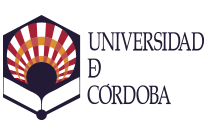Use of 3D Printing in Model Manufacturing for Minor Surgery Training of General Practitioners in Primary Care
Autor
Luque, M.C.
Calleja-Hortelano, A.
Romero, Pablo E.
Editor
MDPIFecha
2019Materia
3D printingAdditive manufacturing
Fused deposition modeling (FDM)
Minor surgery
Primary care
Surgical training
METS:
Mostrar el registro METSPREMIS:
Mostrar el registro PREMISMetadatos
Mostrar el registro completo del ítemResumen
In order to increase the efficiency of the Spanish health system, minor surgery programs are currently carried out in primary care centers. This organizational change has led to the need to train many general practitioners (GPs) in this discipline on a practical level. Due to the cost of the existing minor surgery training models in the market, pig’s feet or chicken thighs are used to practice the removal of figured lesions and the suture of wounds. In the present work, the use of 3D printing is proposed, to manufacture models that reproduce in a realistic way the most common lesions in minor surgery practice, and that allow doctors to be trained in an adequate way. Four models with the most common dermal lesions have been designed and manufactured, and then evaluated by a panel of experts. Face validity was demonstrated with four items on a five-point Likert scale that was completed anonymously. The models have obtained the following results: aesthetic recreation, 4.6 ± 0.5; realism during anesthesia infiltration, 4.8 ± 0.4; realism during lesion removal, 2.8 ± 0.4; realism during surgical wound closure, 1.2 ± 0.4. The score in this last section could be improved if a more elastic skin-colored filament were found on the market.

